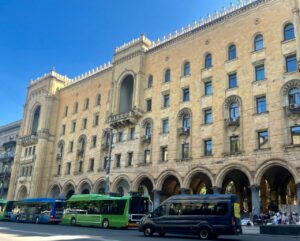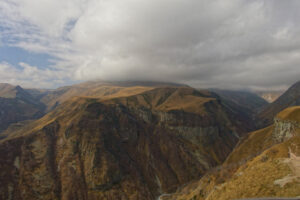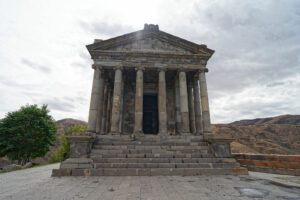On the corner of Rustaveli and Kakabadzeebi stands a building that commands the attention of any passerby. Vendors gather every morning on the stairs leading up to striking arches.
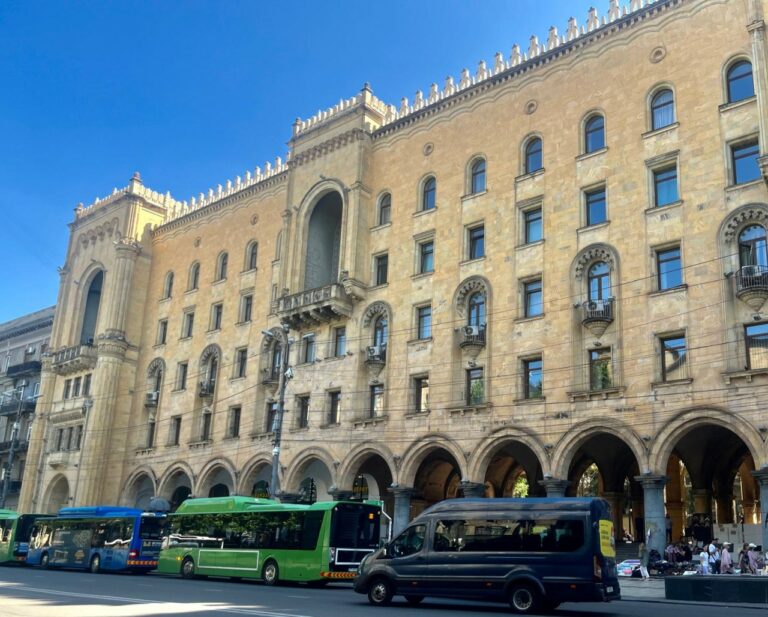
Above the crowds selling paintings, books, souvenirs, and jewelry, rises an incredible edifice, made from warm beige slates from the tuff quarry in the Bolnisi district.
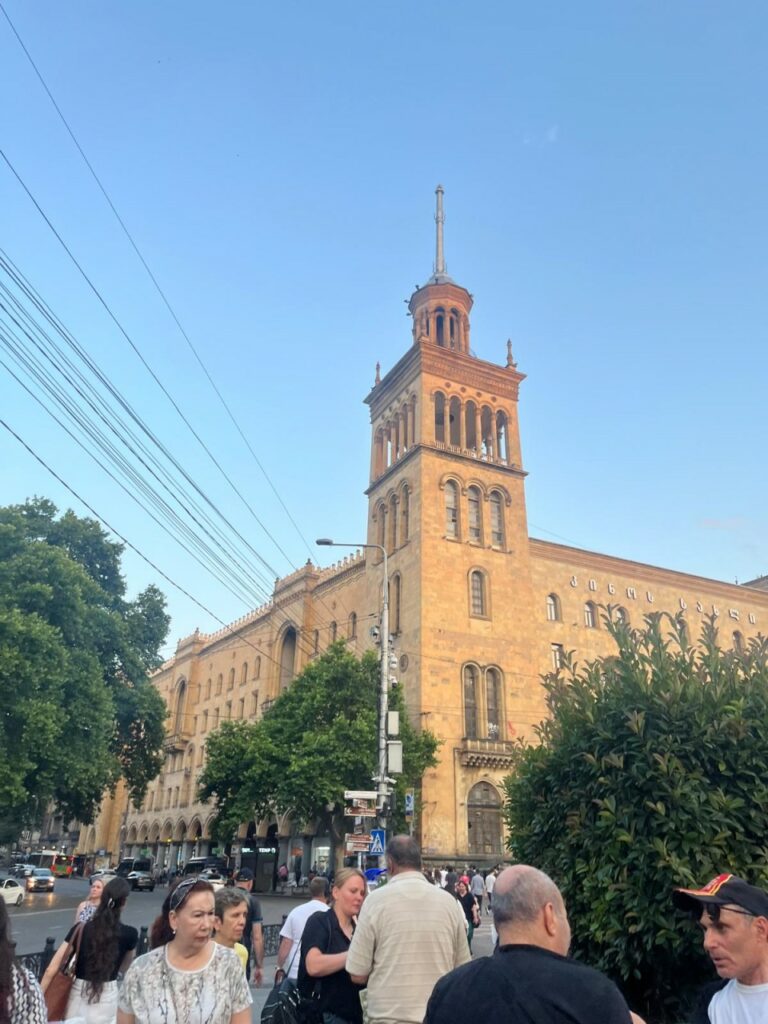
Angular attached columns extend up the sides of the building, intercepted by intricate cornices and ornate overhanging jetties. The roof of this building is lined with a series of thin merlons, reminiscent of a romantic 19th century castle.
The most attention grabbing part of the building is its large square tower, above which a conical roof extends with an even taller spire above. This spire is the reason my host mom jokingly called this building the “pencil building” on my first night in Tbilisi.
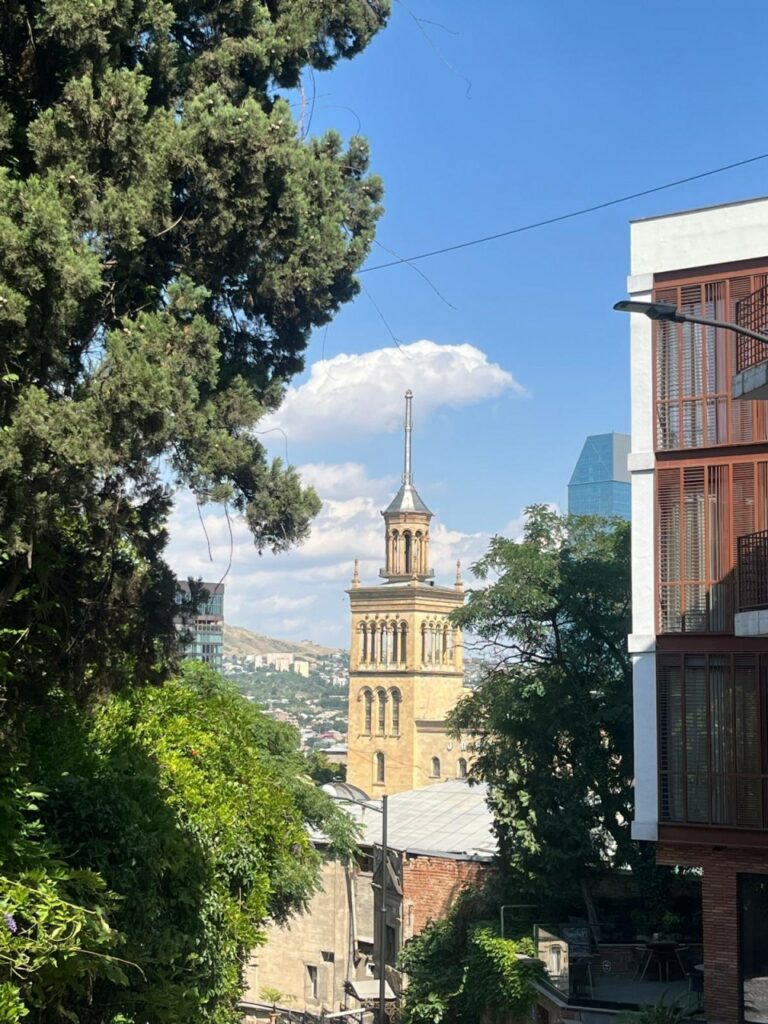
This building is none other than the Georgian National Academy of Sciences, established on February 25, 1941, as the highest scientific institution in Georgia. The architects of the project were Mikhail A. Chkhikvadze and Konstantin C. Chkheidze. Originally built to house the Gruzugol Trust, the building was actually modeled after Stockholm City Hall, which was built in 1923 by architect R. Estberg.
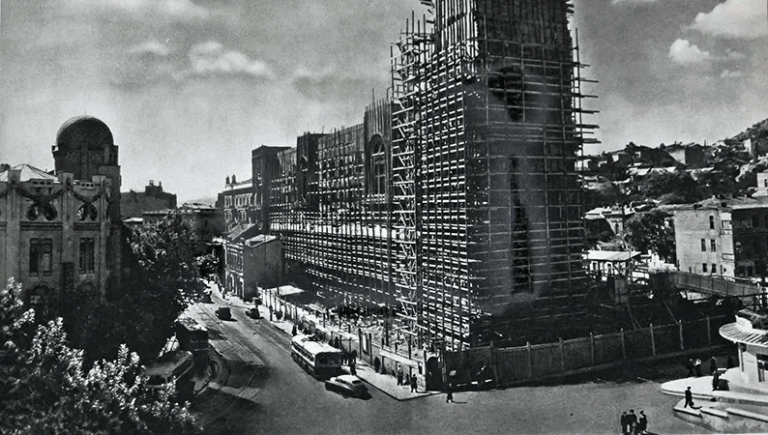
The academy, founded my masters in the fields of social and natural sciences, represents the inheritance of Georgia’s tradition of cultural investigation, scientific development, and intellectual exchange–a legacy that has been carried on in the territory of contemporary Georgia since the first millennium.
